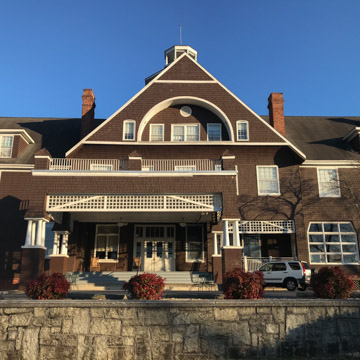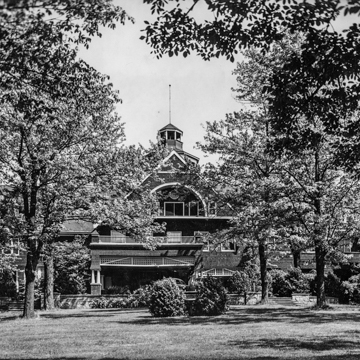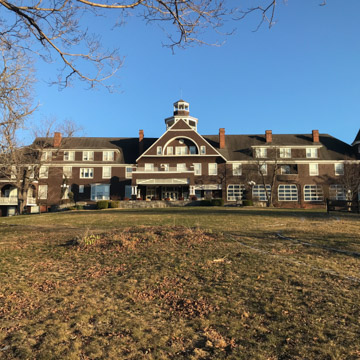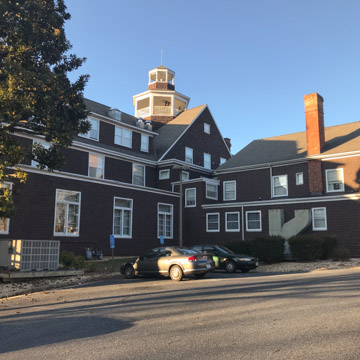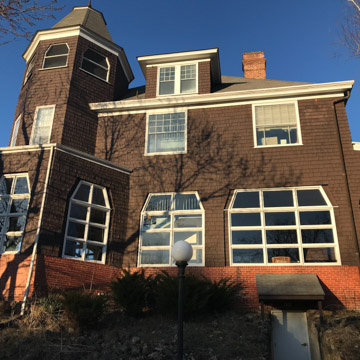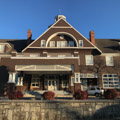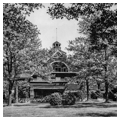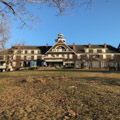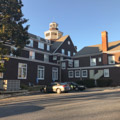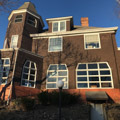You are here
Fairfax Hall (Hotel Brandon)
Set in a spacious picturesque lot in the foothills of the Blue Ridge Mountains overlooking Waynesboro, this is one of the few surviving examples of the elegant Victorian railroad hotels constructed in the Valley. Poindexter of Washington, D.C., combined elements of Queen Anne and Shingle Style to give the hotel an undulating shingled facade wrapped with porches and nooks. A polygonal cupola crowns the central gabled section. The interior, which was furnished by Philip Brown, included rooms for two hundred guests. The hotel became the social hub of the community in the early twentieth century, drawing visitors for weddings, parties, and other events. The railroad sold the property in 1913 and the building was converted into the Brandon Institute, a small coeducational college. In 1920, it became Fairfax Hall, a preparatory school for girls and, later, a junior college. The third floor was added for additional dormitory rooms. A gymnasium designed by T. J. Collins and Son was constructed in the 1920s behind the main building. Since the school closed in 1975, the building has served several uses and in 2001 was renovated for affordable housing for the elderly and for events.
Writing Credits
If SAH Archipedia has been useful to you, please consider supporting it.
SAH Archipedia tells the story of the United States through its buildings, landscapes, and cities. This freely available resource empowers the public with authoritative knowledge that deepens their understanding and appreciation of the built environment. But the Society of Architectural Historians, which created SAH Archipedia with University of Virginia Press, needs your support to maintain the high-caliber research, writing, photography, cartography, editing, design, and programming that make SAH Archipedia a trusted online resource available to all who value the history of place, heritage tourism, and learning.














